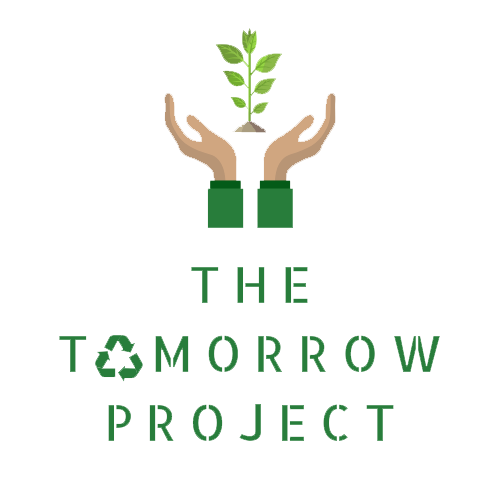An Unlivable Reality: Environmental Racism
By Surya Shanmugaselvam: Northeast regional outreach manager at The Tomorrow Project
In tens upon thousands of underprivileged, low-income communities across our country, people are suffering from conditions that none of us would ever want to imagine. Higher risks of lung cancers and acute pulmonary diseases as well as greater frequencies of premature deaths reported among communities of color. It is a shocking statistic in a nation that prides itself on being the land of the free. Some communities and disadvantaged groups in our nation are actively cut off from the rest of society every single day. They are inundated with cataclysmic particulates and pollution, losing their basic welfare and freedom to life. The first question we all ask ourselves: how can industrial pollution be used to marginalize one group below the other? It’s a hard truth that begs to be realized.
Racial equity and environmental justice has been a long transpiring battle. The Civil Rights Movement of the 1960s brought forth an end to historic discrimination, easing our nation into the inclusion of all races within all aspects of society. Legal measures and historic landmark cases made it so, and for the first time in 1965, after almost three centuries of racial marginalization, our nation decided it had enough. But injustice was still alive and well, this time in a different form and through a different medium. As the industrial revolution and post-industrial corporate era grew, the demand for energy and goods sparked a proliferation of industrial plants, pipelines, and dirty landfills. However, to avoid polluting cities and suburban white communities, the government and various corporations almost always located their filthy powerhouses near minority communities. So, minority individuals such as black Americans, Hispanics, and indigenous people were more frequently exposed to carcinogens and pollutants such as soot than their more prosperous white counterparts. Several studies declare that non-whites have a 30% higher health burden due to pollutant contamination; that is more than 54% for African Americans alone.
Aside from the statistics are blatant examples throughout history. In the 1960s, Latino farmworkers led by Caesar Chavez fought against the use of harmful pesticides in California’s San Joaquin Valley. In 1967, African American students took to the streets of Houston to protest a large community trash dump that had claimed the life of a child and the health of several others. In 1968, residents of West Harlem in New York City fought against a sewage treatment plant built within their neighborhoods. In 1982, North Carolina’s government decided to move soil contaminated by dangerous PCB particles from a central waste facility to a landfill in Warren County, one of the few countries with a black majority population. Recently, a relaxation of pollution restrictions by the Trump Administration has concentrated toxic particulate matter and aerosols such as PM2.5 directly into underfunded black and Hispanic communities. Extraction companies looking to make money off of oil and natural gas have begun to drill on the cultural and ancestral lands of indigenous native Americans.
It is about time that this receives the attention it deserves. For several years now, a disproportionate number of ethnic-minority households have lived under an irrepressible blanket of hazardous air. The ensuing evidence confirms it: significantly higher rates of asthma, cancer, and other respiratory infections. And the recent Coronavirus has inflamed these numbers with African American deaths at three times that of white Americans. All of this due to a history of predisposing conditions leading to more severe cases. Our chance is now to secure a prosperous livelihood for all people. The Black Lives Matter movement happening all across the world has brought to light the various suppressive inequalities black and other minority individuals face every single day. Environmental racism has been happening for years now and the events of the past decade have clearly demonstrated its viciousness. We cannot simply heed this data and carry on with our daily lives. We need to educate ourselves, spread awareness to friends and family, and fight! Fight so everyone, regardless of race or ethnicity, has the right to breathe clean and quality air. Our next-generation shall not grow up in a world where the color of their skin or the origin of their birth defines the air they breathe and the life they live.
African Americans and Hispanic individuals are exposed to 1.5 times more particulate matter than whites.
Interview with Indigenous Environmental Network:
Postponed :-(
Ways you can take action:
Stand with Standing Rock - Help Indigenous Americans fight the Extractive Industry
https://standwithstandingrock.net/donate/
WE ACT for Environmental Justice
https://www.weact.org/home/getinvolved/donate/
Interesting Organization working to expand education and enrich African American and Latinx communities:
https://blackandbrownfounders.com/pave-the-way-to-5k
Colin Kaepernick’s Know Your Rights Camp and Covid-19 Relief Program to Black Communities:
https://www.knowyourrightscamp.com/covid19
Sources used:
Provides information about recent environmental inequalities and evidence:
Health burdens due to Environmental Racism:
Health Statistics and Information from the American Lung Association:
https://www.lung.org/clean-air/outdoors/who-is-at-risk/disparities
History of Environmental Racism by the NRDC:
https://www.nrdc.org/stories/history-environmental-justice-five-minutes
Provides insight into resource extraction and how it hurts indigenous communities:
New Covid-19 numbers that highlight racial divide:
https://www.theguardian.com/world/2020/may/20/black-americans-death-rate-covid-19-coronavirus
